Go to Ile De La Cité – Paris’ Beating Coronary heart
The Ile de la Cité is likely one of the two islands alongside the Seine River within the middle of Paris. It’s the oldest core of Paris, the place the Celtic tribe of the Parisii settled within the third century BC, and it boasts a number of the metropolis’s most iconic monuments.
The Ile de la Cité is a part of Paris’ First and Fourth Arrondissements, a spot of tranquility, magnificence, and historical past. To admire all that Ile de la Cité affords, you need to discover it on foot!
With this self-guided strolling tour of Ile de la Cité, map included, you’ll be able to uncover all its finest spots and hidden gems for a memorable time!
Self-Guided Strolling Tour of Ile De La Cité
Begin this Ile de la Cité strolling tour from the Metro Station Pont Neuf (Line 4). Proper beside it’s the lovely Pont Neuf, one of many bridges alongside the Seine River.
TIP: Save money and time by buying the Paris Museum Cross, which lets you go to all of the vacationer points of interest included on this strolling tour (Crypte Archéologique, Conciergerie, and Sainte Chapelle)!
1. Pont Neuf
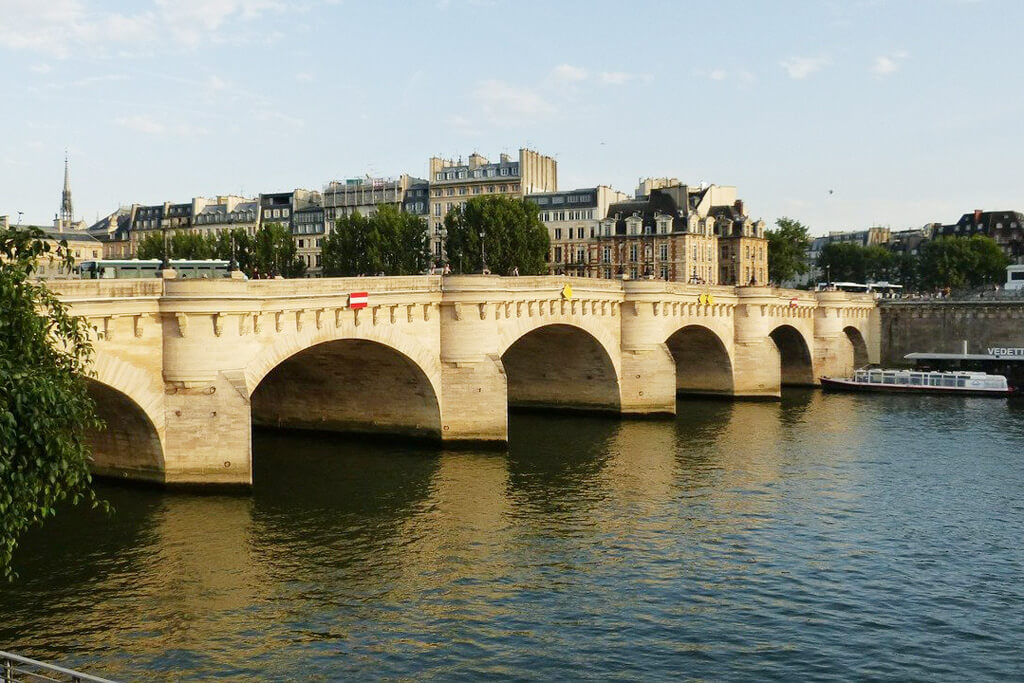
Inbuilt 1578 beneath the reign of King Henri III, the Pont Neuf is 232 meters lengthy and boasts a design that reminds of earlier Roman constructions.
Regardless of its title (new bridge in French), Pont Neuf is the oldest bridge in Paris and the primary one inbuilt stone. Earlier than, the bridges had been made from wooden.
As soon as off the bridge, look to your proper, and also you’ll see the Statue of King Henri IV, the following cease of this strolling tour.
2. Statue of King Henri IV
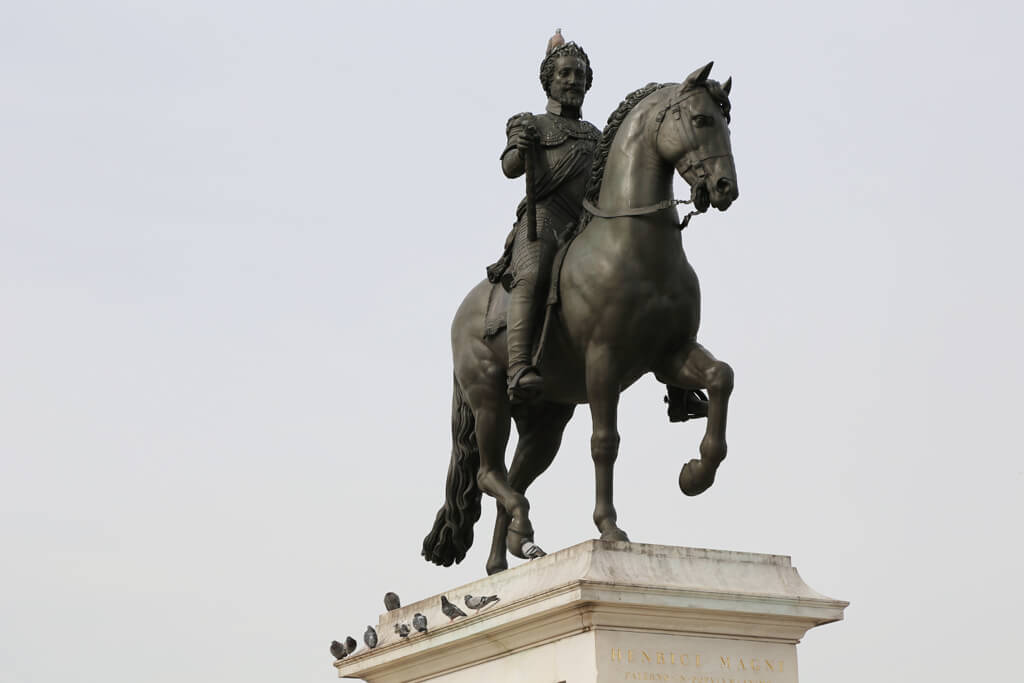
It’s unimaginable to overlook the equestrian statue of King Henri IV, monarch of France. Queen Marie de Médicis commissioned this statue to pay tribute to the King, her husband. Sadly, King Henri IV by no means noticed the completion of the statue as he was assassinated in 1610.
The equestrian statue we go to immediately will not be the unique bronze one, because it was destroyed through the French Revolution. The present model dates again to the return of the Bourbons in France, and it was made by melting a number of statues of Napoléon I and his generals.
There are numerous legends in regards to the statue of King Henri IV that you could uncover by testing this submit.
The following cease of this strolling tour, Sq. du Vert Galant, is true behind the King Henri IV statue.
3. Sq. du Vert Galant
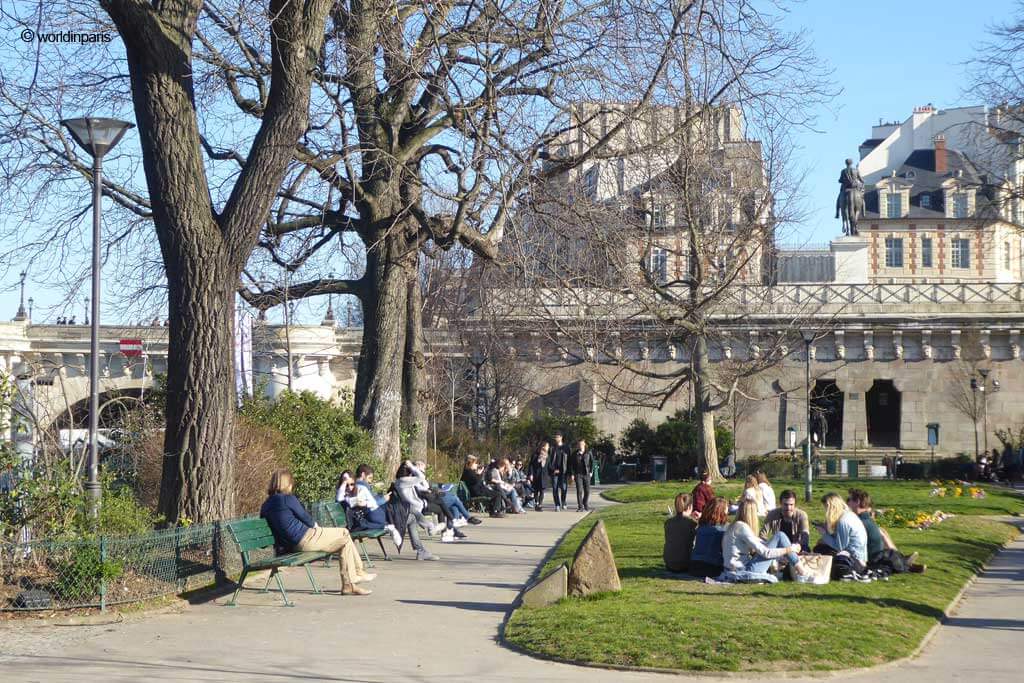
The Sq. du Vert-Galant was named after King Henri IV. The King was nicknamed the “Vert Galant” (Inexperienced Galant), an expression used for a person of superior age who had not misplaced his sexual urge for food.
This sq. is an ideal spot to take a seat and chill out whereas watching the Seine River cruises go by. The beautiful Sq. du Vert-Galant is traditionally related as it’s the place the final templars had been burned.
As well as, it obtained the “Ecological Inexperienced Area” label in 2007 resulting from its spectacular number of fauna and flora.
Stroll again to the Statue of Henry IV and go by it. Maintain going straight, and you can be at Place Dauphine in a minute.
4. Place Dauphine
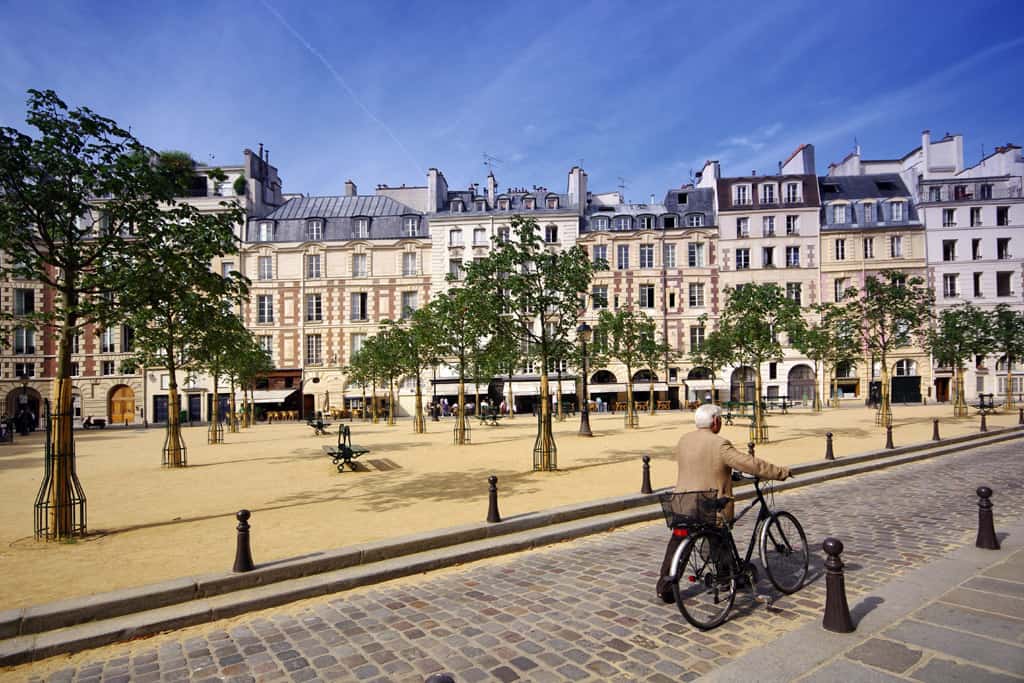
One of many Royal Squares in Paris, Place Dauphine was commissioned by King Henri IV in 1607 in honor of his son, the Dauphin of France, the long run King Louis XIII. Round this triangular sq. are 32 equivalent homes in white stone and brick with slate roofs.
Place Dauphine is a good spot for a espresso break and people-watching. It’s common to see some individuals enjoying pétanque on this sq..
From Place Dauphine, stroll to Quai des Orfèvres by turning your again to the King Henry IV Statue. In 7 minutes, you can be on the Palais de la Justice.
5. Palais de la Justice
The Ile de la Cité was the seat of essential powers. Within the jap half, there was the spiritual energy, and within the western half, there was the state energy. The Capetians had been The primary kings to decide on Ile de la Cité the place they constructed the Palais de la Cité across the finish of the Xth century.
Within the XIVth century, Charles V was the final king to stay within the Palace. The kings of France then lived within the Louvre Palace and the Hôtel Saint-Pol in Le Marais.
After Charles V, the Palace turned the Palais de Justice or Courthouse. It covers 4 hectares and has 24 kilometers of corridors.
What you see right here is the Palais’ west façade. Up to now, this façade will need to have been the doorway to the Courthouse, which is why it’s the just one on which the title “Palais de Justice” is inscribed.
The architect Duc was impressed by the traditional Egyptian temple of Dendera: trapezoidal door, sideboard wall (under the home windows), fluted columns surmounted by feminine figures. It’s adorned with six statues that characterize (from left to proper) prudence, fact, punishment, baby safety, power, and equity. Above, there are symbols of justice and two eagles which remind us that this façade was constructed beneath Napoleon III.

6. Monogram and Medallion of Napoléon I

Whereas doing the strolling tour, I counsel you cease for a couple of minutes on the extremity of the west façade of Palais de la Justice to admire the medallion of Napoléon I and the monogram.
Distinctive of its sort, the bas-relief medallion honors Napoléon I, who, because the First Consul of the Republic, had dropped at completion the French Civil Code (1804). Generally known as the Napoleonic Code, it’s nonetheless in pressure in France, though it has been modified since its inception, and was the principle affect on the Nineteenth-century civil codes of most international locations of continental Europe and Latin America.
The Tour de l’Horloge, the following cease of this Ile de la Cité tour, is on the nook between Boulevard du Palais and Quai de l’Horloge. You will get there in simply 1 minute.
7. Tour de l’Horloge
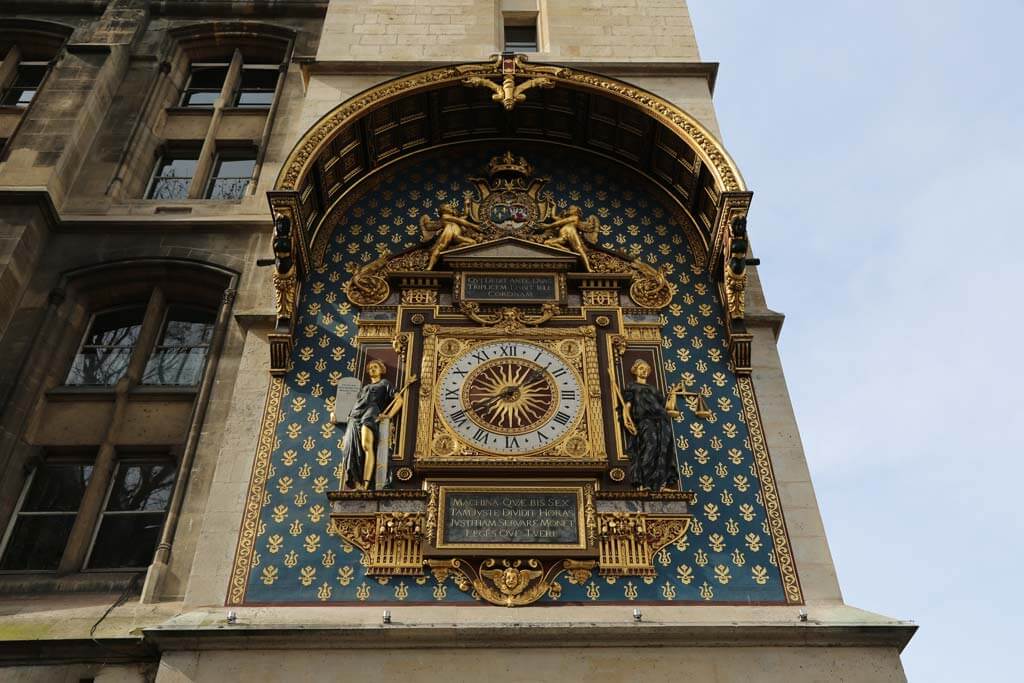
The Tour de l’Horloge is likely one of the towers of the Palais de Justice in Paris. Its fundamental attraction is the beautiful clock that offers it its title.
This clock, shining with its gold parts, dates again to the 14th century. What’s shocking is that it survived unscathed through the French Revolution, when many different websites round Paris had been dismantled.
The Conciergerie, the following cease of this strolling tour, is between the Palais de la Justice and Tour de l’Horloge.
8. Conciergerie
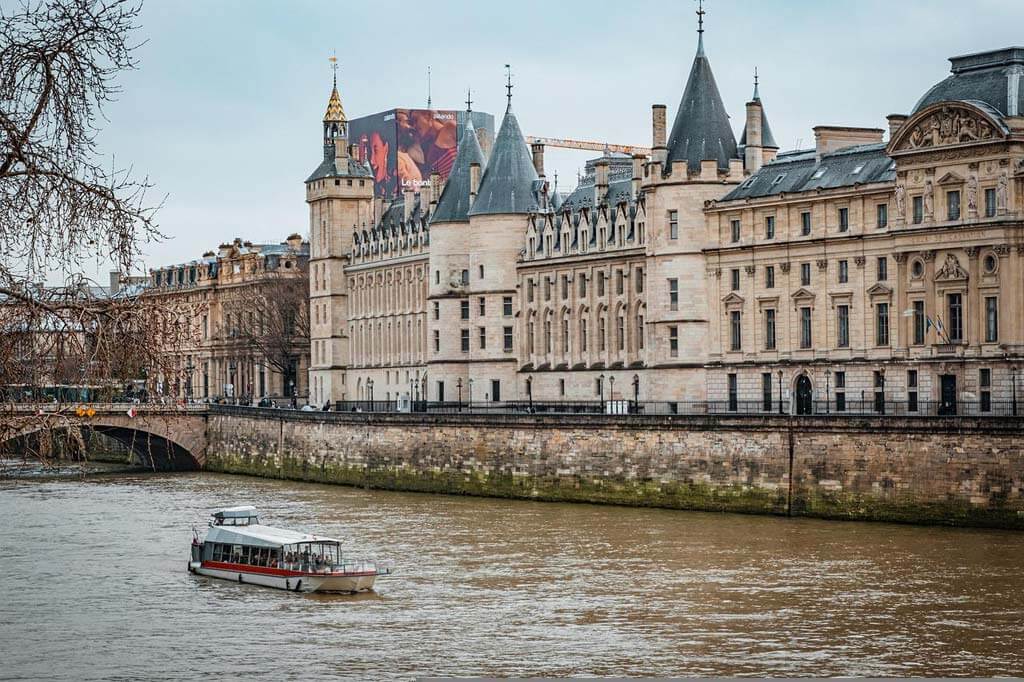
The Conciergerie was initially a part of the Palais de la Cité, which additionally included the Sainte-Chapelle.
With the conversion of the Royal Palace right into a Courthouse, jail cells had been steadily added to the decrease components of the constructing, which turned often called the “Conciergerie.”
If attainable, go to the Conciergerie inside: it nonetheless retains spectacular rooms and halls from Medieval occasions, when it hosted the royal household. Their structure, in Gothic model, is magnificent! The bundle Conciergerie + Sainte-Chapelle will prevent money and time.
Part of the palace was successively transformed into a jail. Its most well-known prisoner was Marie-Antoinette, who spent there her final days of life earlier than being despatched to the guillotine.
Sainte Chapelle sits proper subsequent to the Conciergerie.
9. Sainte Chapelle
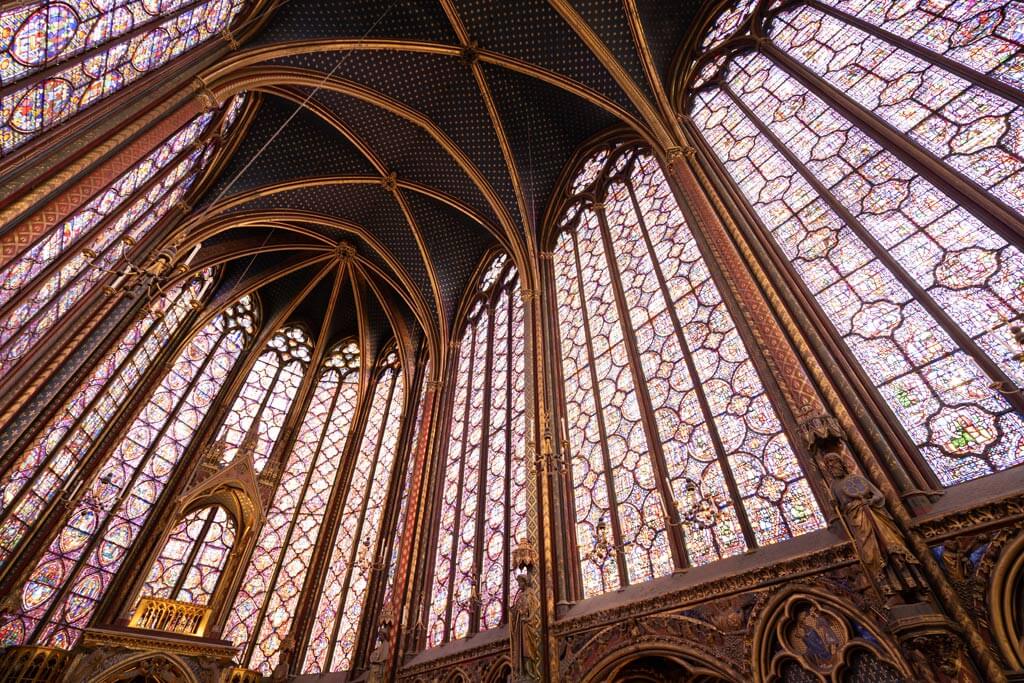
One of many most unusual locations to go to in Paris, the Sainte Chapelle, was initially a part of the Palais de la Cité. King Louis IX (Saint Louis) commissioned it to accommodate treasured Saint relics.
The Sainte Chapelle is a wonderful instance of Gothic structure, with excessive vaulted ceilings and home windows telling the story of the Bible and the way the Saint Relics got here to Paris.
Essentially the most spectacular characteristic of the Sainte Chapelle is its distinctive assortment of stained glass home windows, that are really breathtaking when seen from contained in the Chapel.
Cross Boulevard du Palais and take Rue de Lutèce. Activate the primary slender avenue on the left, and you’ll find your self on the Marché aux Fleurs.
10. Marché aux Fleurs
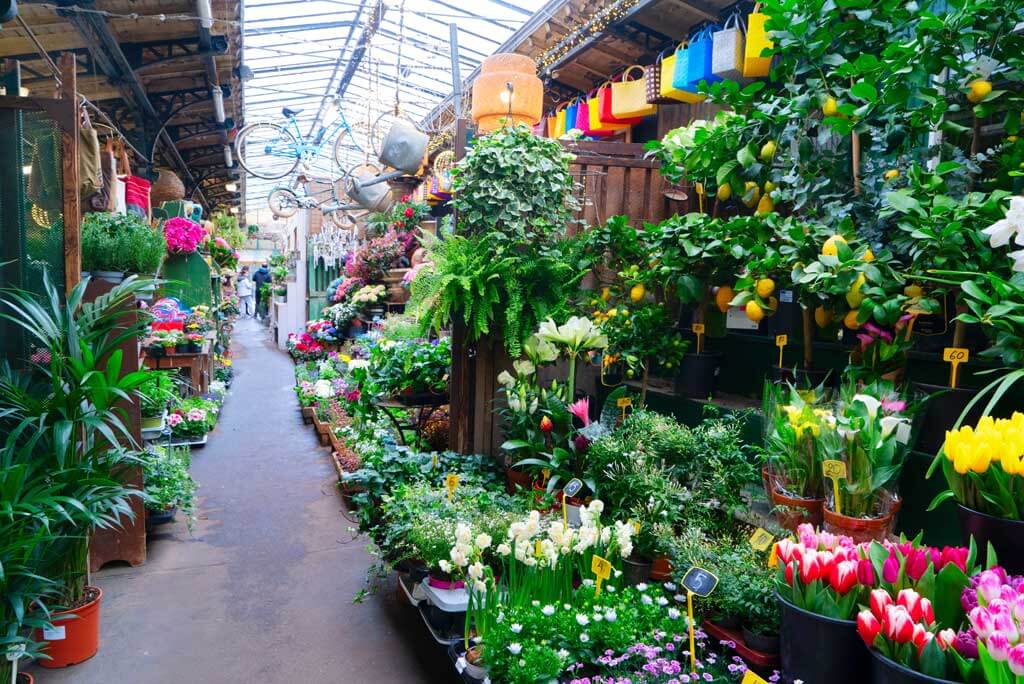
The Marché aux Fleurs, also referred to as Marché Reine Elisabeth II, is likely one of the prettiest flower markets in Paris. Opened round 1808, it has bought colourful flowers and a blinding array of crops ever since.
Up to now, this place was additionally the place Parisians would come to buy birds, which is why its former title was the Marché aux Fleurs et aux Oiseaux.
The market is indoor and out of doors, with stalls housed in 1900s-built pavilions.
From the Marché aux Fleurs, head to Rue de la Cité and comply with it for five minutes till you arrive on the Notre Dame Cathedral. The entry to the Crypte Archéologique is true in entrance of the Cathedral.
11. Crypte Archéologique
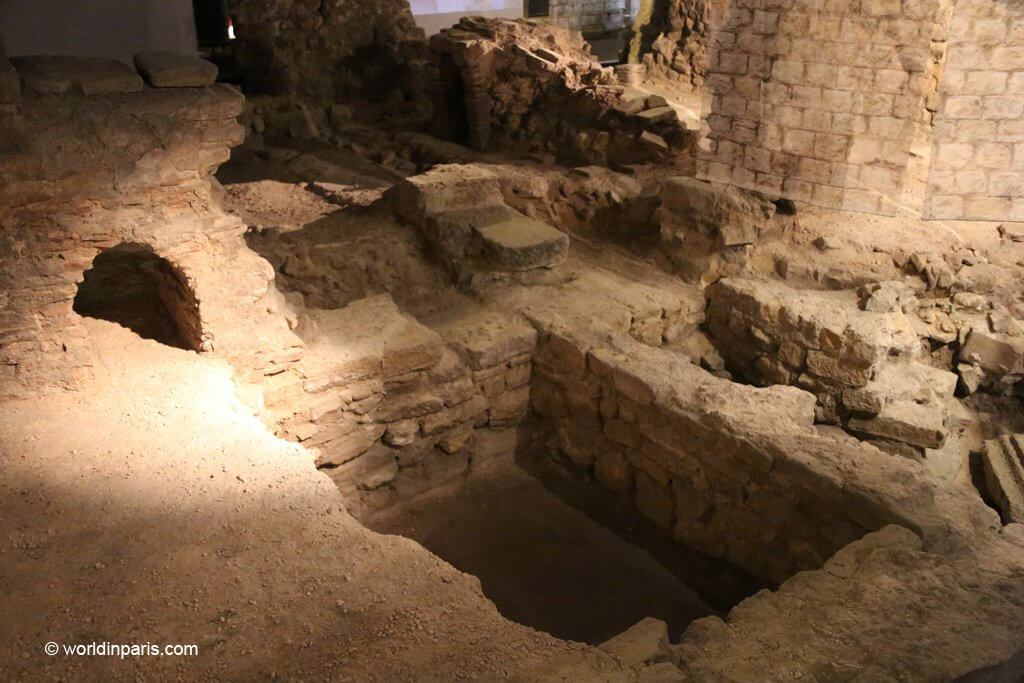
Whereas Notre Dame Cathedral will certainly get your consideration instantly, you need to first go to the Crypte Archéologique, probably the most fascinating websites of underground Paris.
This under-the-tourist-radar spot is ideal for immersing your self in Paris’s historical past. The 200-meter-long crypt incorporates archeological findings from the Gallo-Roman period to the Center Ages to the Nineteenth century.
It’s the largest crypt in Europe, and to make guests’ expertise extra immersive, there are interactive maps and 3D animations.
Particularly, you’ll uncover a part of the docking port of the Gallo-Roman metropolis of Lutetia, the basement of the previous Hôtel Dieu Chapel, and the stays of the Rue Neuve-Notre-Dame. There are additionally Roman baths.
Notre Dame Cathedral is true behind the Crypte Archéologique.
12. Notre Dame Cathedral (Notre Dame de Paris)
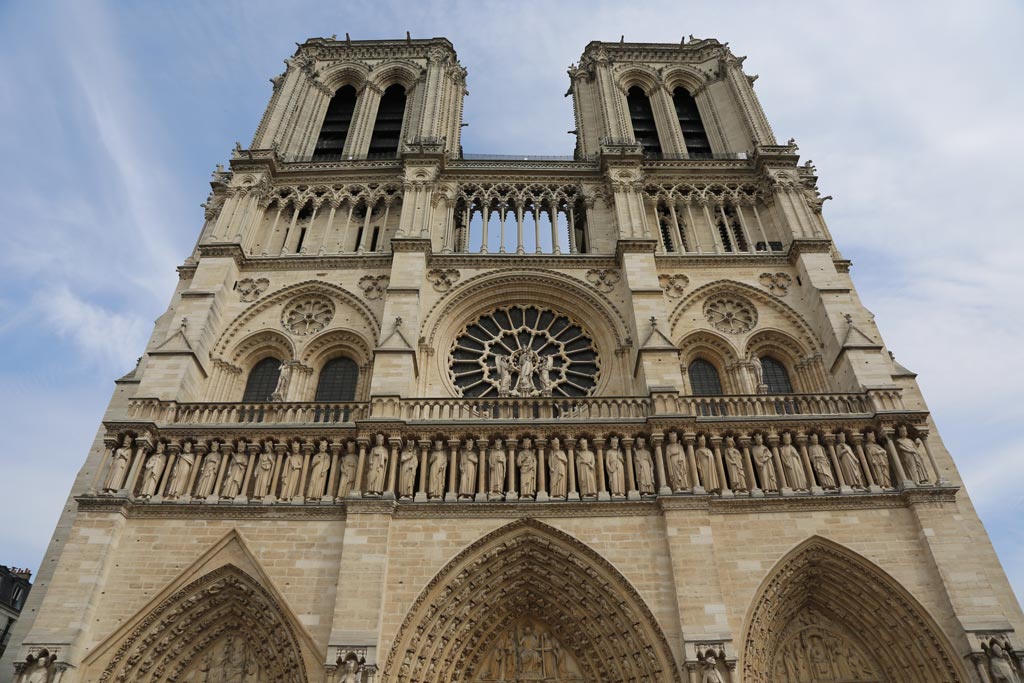
One of many fundamental landmarks in Paris, Notre Dame Cathedral was constructed within the late twelfth century however accomplished solely 200 years later. It is likely one of the first Gothic cathedrals on the earth, constructed solely after Basilique de Saint-Denis.
It boasts a surprising exterior facade with excessive spires and stone-built gargoyles. The inside is simply as astonishing, with lovely stained glass home windows and a panoramic rooftop.
Notre Dame is at the moment closed to the general public after the injury attributable to the devastating fireplace of 2019. It should reopen in December 2024. I can’t wait to go to it once more! Listed below are some information about Notre Dame Cathedral, from its start to its reconstruction. On this article, additionally, you will discover the brand new guidelines for visiting Notre Dame after its reopening.
Leaving the Notre Dame Cathedral behind you, take the road on the suitable, Rue d’Arcole, and stroll straight for two minutes. When on the nook with Rue Chanoinesse, take it, and you can be at your subsequent cease.
13. Au Vieux Paris d’Arcole
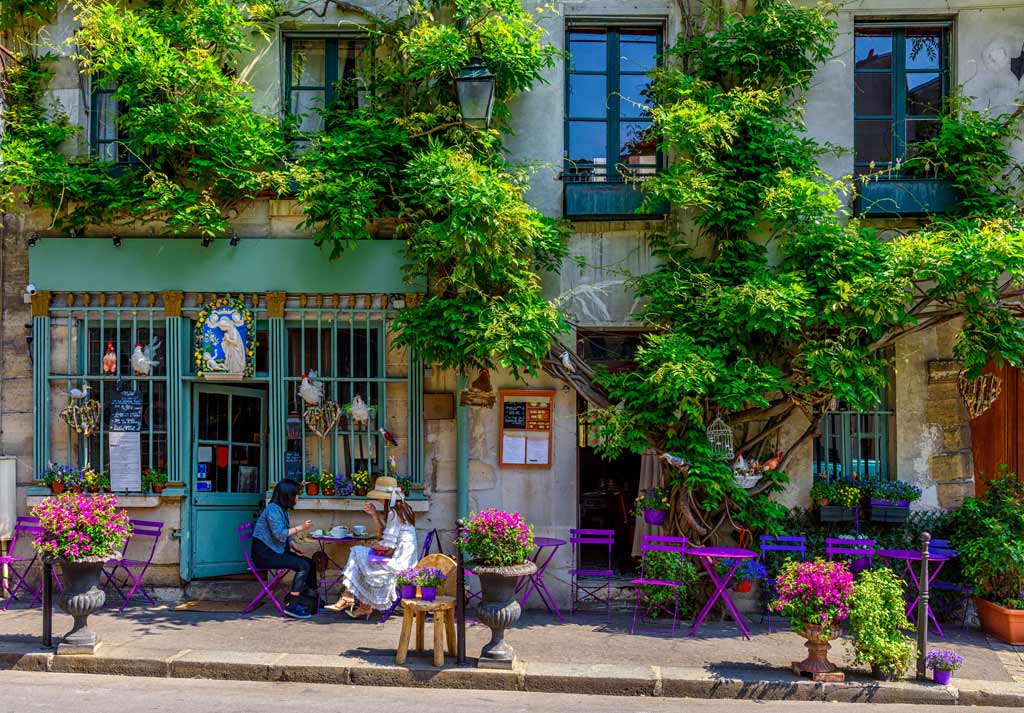
The following cease of this strolling tour is likely one of the most photographed locations in Paris. Au Vieux Paris d’Arcole on 24 Rue Chanoinesse is especially charming when the wisterias that beautify its façade are in full bloom.
Inbuilt 1512, it was the residence of the canons of Notre Dame, one among whom was the long run Clément VIII, Pope of Avignon. The home was bought in 1723 after which turned a wine bar. You may nonetheless see the fence on the entrance, which was as soon as obligatory for liquor sellers.
As we speak, Au Vieux Paris d’Arcole is a café (on the bottom flooring) and a restaurant (on the primary flooring) providing nice French delicacies. Due to its historical past, it’s listed as a Historic Monument.
The following cease, Rue de la Colombe, is 1 minute from Rue Chanoinesse.
14. Rue de la Colombe
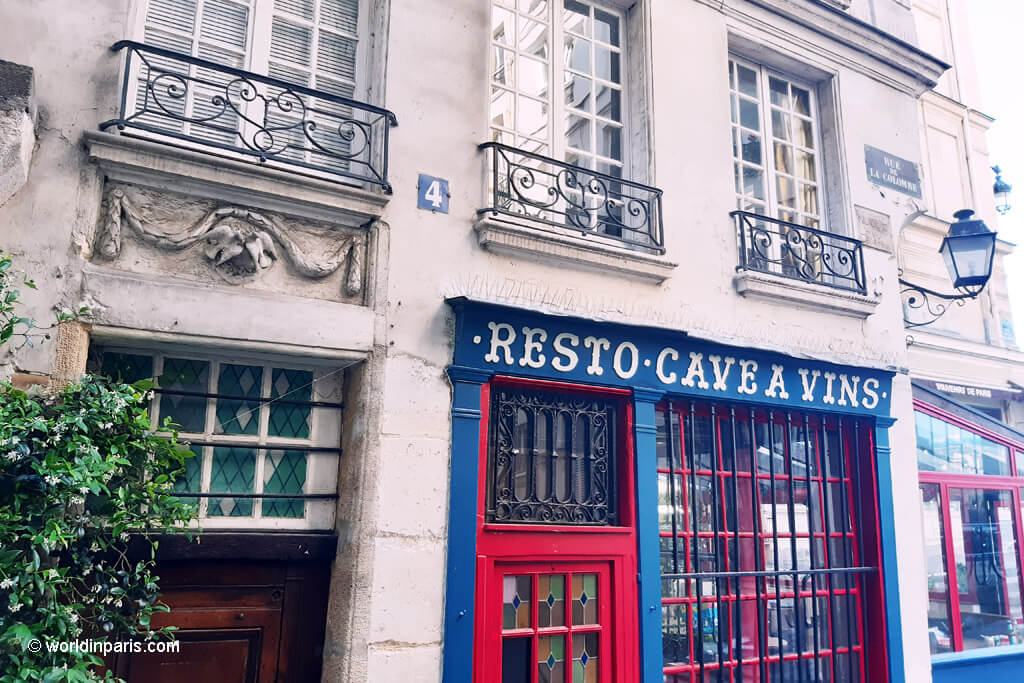
Rue de la Colombe (‘Dove Avenue’ in English) is an outdated slender avenue the place you’ll be able to see the stays of the primary wall of Paris, which was raised in 276 CE and survived the Barbarian invasions.
Situated at quantity 4 on this avenue can be the Maison de la Colombe, the oldest bistrot in Paris, The constructing the place the bistrot is surrounded by an attention-grabbing legend. If you’re curious to know all about it, try this submit.
Quai aux Fleurs, the following cease of this Ile de la Cité strolling tour, is the road perpendicular to Rue de la Colombe, strolling towards the Seine River. You will get to it in simply 3 minutes.
15. Héloïse’s Former Home

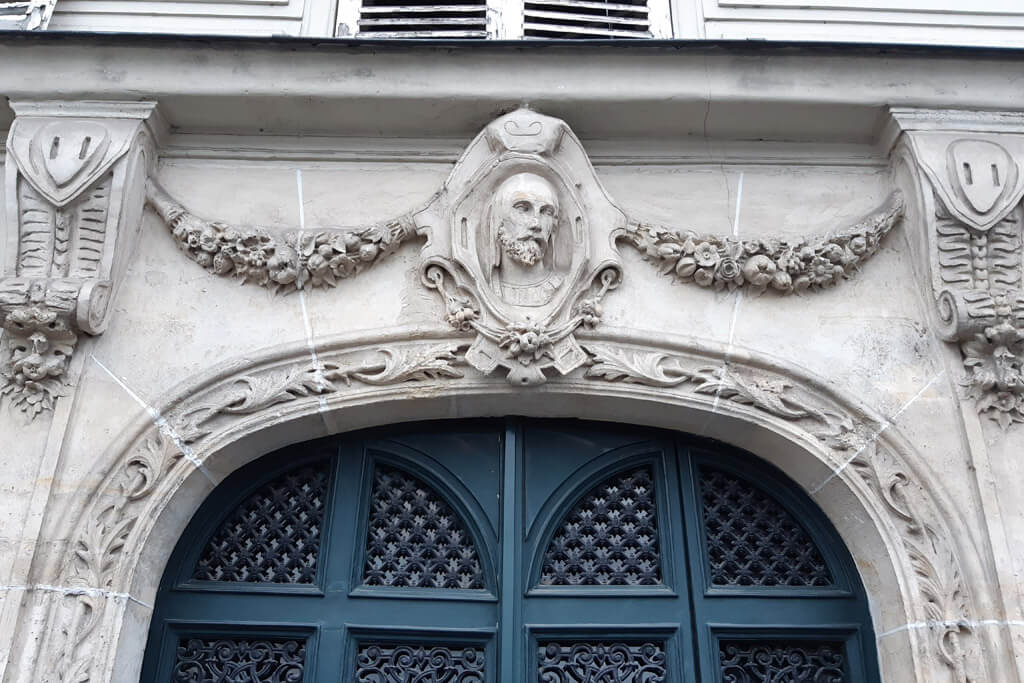
At quantity 11 of Quai des Fleurs is the previous home of Héloïse, the Parisian Giulietta. Her love story with Abélard is likely one of the most well-known of Medieval occasions.
The constructing is embellished with the attractive bas-relief of the 2 lovers, whose tragic love story you’ll be able to examine in this submit.
You may go to the tombs of Héloïse and Abélard on the Père Lachaise Cemetery, probably the most beautiful in Paris.
Stroll Quai des Fleurs all the way in which to its finish towards Pont Saint-Louis, and you’ll arrive at Sq. Ile de France.
16. Sq. Ile de France
The final cease of this strolling tour is the stunning Sq. Ile de France. Its historical past began within the 14th century when it was used as a dump for the garbage collected after the development of Notre Dame Cathedral.
By 1687, the realm was remodeled right into a backyard reserved for males, a part of the enclosure of the Cathedral’s canons.
Issues modified once more within the Nineteenth century when the sq. turned the location of the Morgue of Paris. The morgue was open to the general public so everybody might go there to attempt to acknowledge unidentified our bodies discovered within the Seine or elsewhere within the metropolis.
The Morgue of Paris turned an uncommon and favourite attraction for locals, with greater than 40,000 day by day guests! As we speak, there’s a grade from which you’ll get pleasure from lovely views of the Seine River, the Pont de la Tournelle, and Ile Saint-Louis.
If you’re within the temper for extra strolling, cross Pont Saint Louis to go to Ile Saint-Louis. You may try my submit on the finest issues to do in Ile Saint-Louis for some inspiration. Alternatively, you’ll be able to proceed exploring Paris by doing a strolling tour of the Latin Quarter.
Disclaimer: This submit contains affiliate hyperlinks, which means I get a small fee when you make a purchase order via my hyperlinks. It prices you nothing extra (in reality, if something, you’ll get a pleasant low cost) however helps me to go on creating unimaginable Paris content material for you. I belief all merchandise promoted right here and would by no means advocate a product that isn’t of worth. World in Paris is a participant within the Amazon Companies LLC Associates Program. As an Amazon Affiliate, I earn from qualifying purchases at no expense to you.


